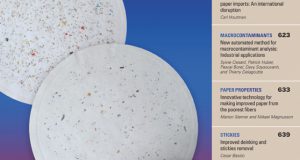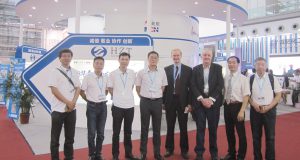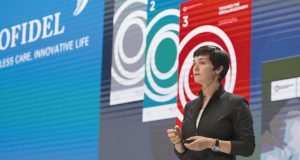MURRAY ELLIS
One of the most rewarding and enjoyable parts of my career in the pulp and paper industry has been the opportunity to investigate and solve problems. The problem-solving process means that you are discovering, adapting, and generating new information to address the problem at hand. In simple terms, you are acquiring knowledge in the pursuit of a solution. However, sometimes this problem-solving process does not find a solution easily.
 This has been the case for a persistent lime kiln ringing problem at Australian Paper’s Maryvale mill. In fact, problem-solving of this issue has not reached a successful conclusion after several years of investigations.
This has been the case for a persistent lime kiln ringing problem at Australian Paper’s Maryvale mill. In fact, problem-solving of this issue has not reached a successful conclusion after several years of investigations.
Problem-solving can be a solitary task, but in my experience it is best approached by taking input from more minds than just my own. Relevant information may be available in textbooks, seminars, published papers, or on the web; however, when it comes to complex mill issues—like kiln ringing—nothing beats face-to-face discussions and the ability to actually observe in person. The issue for us Down Under is that the critical mass of pulp and paper mills, and therefore the majority of knowledge, is nowhere near us—it’s locked up on the other side of the world.
Fortunately, in June 2016 I was able to bridge that gap and meet my need for information and experience on this difficult and persistent problem. I attended and presented at TAPPI KilnCon 2016, and then visited the Daishowa Marubeni International (DMI) Peace River mill in Alberta, Canada. Partial funding for the trip came from prize money I had won during the Best Mill Paper awards at the annual Appita conference (Appita is the Australian pulp and paper industry technical association.)
FIRST STOP: KILNCON
KilnCon 2016 was held in Destin, FL, and was hosted by TAPPI’s Gulf Coast and Southeastern Local Sections. This annual meeting has found a niche where the focus is solely on lime kiln operations in the pulp and paper industry. It was an ideal event in my quest for extra knowledge and experience related to lime kilns, and specifically about kiln ringing. The event included three technical seminars and a full-day technical conference where I was privileged to be a presenter.
Major suppliers such as Valmet and Andritz made presentations on the latest technology, including their offerings of external mud dryers, coolers, burners, and equipment for white liquor production. The most recent white liquor plant installations have been predominantly in Brazil. These installations are often large single line processes with lime kilns producing greater than 1000 metric tpd of lime.
Approximately 100 people attended the event, with a one-third split between mill personnel, suppliers, and others. This meant superb opportunities for learning on a wide range of lime kiln-related topics. My own presentation was  well-received, and I heard plenty of ideas from participants related to our kiln ringing issues. The meeting organizers and TAPPI staff were excellent hosts, making me feel extremely welcome.
well-received, and I heard plenty of ideas from participants related to our kiln ringing issues. The meeting organizers and TAPPI staff were excellent hosts, making me feel extremely welcome.
STOP 2: DMI PEACE RIVER
The next stop on the trip was the DMI Peace River mill. Getting to the mill was a long journey from Florida, but well worth it. This mill is a purpose-built, single line market pulp mill producing both hardwood and softwood bleached market pulp. Built in 1990, the mill is virtually enclosed inside due to the cold weather conditions in this part of Canada. The mill is 50 percent owned by Nippon Paper Industries (NPI), the owner of Australian Paper, which meant that gaining access for my visit was straightforward.
I was able to spend a whole day discussing and observing the Peace River operations—in particular, their lime kiln. They operate a kiln of size and design very similar to that at Maryvale. They, too, have had ringing issues in the past, so my need for practical knowledge and experience with ringing was well-supplied. Many thanks to my hosts Joe Fawcett, power and recovery manager; and Moise Dion, power and recovery process specialist.
KilnCon and the Peace River mill visit were invaluable in terms of helping our problem-solving process for kiln ringing. In addition, the trip provided context and understanding about how other people manage this issue. Several ideas will be added to our investigations as a result of this trip, including how we handle purchased lime, avoiding intermittent sump pump surges in lime mud washer operation, reviewing chain system design, and the use of shell-mounted ring removal equipment (Cardox).
 The trip also provided new contacts and a wider circle of people who can input into my work in Australia. All these things and the direct influence they can have on the decision-making processes at Maryvale have been invaluable.
The trip also provided new contacts and a wider circle of people who can input into my work in Australia. All these things and the direct influence they can have on the decision-making processes at Maryvale have been invaluable.
Finally, I express my thanks to the Appita Supplier Committee for sponsoring the Mill Paper Prize at the annual Appita conference. This prize money was really helpful in being able to achieve my long-held ambition to attend the KilnCon event and, in so doing, met the critical need for mill personnel like myself to discuss and observe firsthand issues of direct relevance to our operations.
Murray Ellis is process technology manager – recovery, at Australian Paper, Maryvale. The Maryvale mill is located in Gippsland, Victoria, 100 miles east of Melbourne. The mill was built in 1937 and has been upgraded periodically over the years to improve efficiency and environmental performance. Contact the author at [email protected].
KilnCon 2017 is being hosted by Southeastern TAPPI and will be held August 30 – 31 at the Georgia Tech Savannah Campus. For more information, contact Glenn Hanson at [email protected].
DMI Peace River Pulp Division in Alberta.
ABOVE: The author presenting at Gulf Coast TAPPI’s KilnCon 2016.
RIGHT: Lime kiln at DMI Peace River.
 Paper 360
Paper 360


